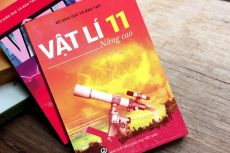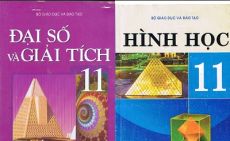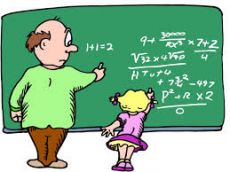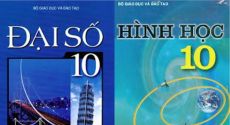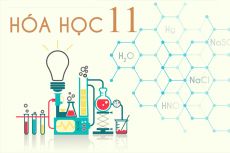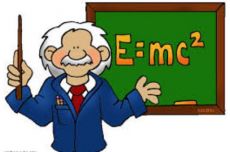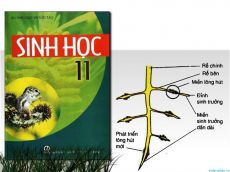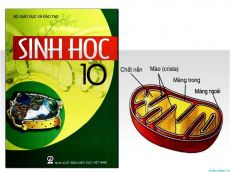Read the passage below and choose one correct answer for each question.
Orbis is an organisation which helps blind people everywhere. It has built an eye hospital inside an aeroplane and flown it all over the world with an international medical team. Samantha Graham, a fourteen-year-old schoolgirl from England, went with the plane to Mongolia. Samantha tells the story of Eukhtuul, a young Mongolian girl. 'Last year, when Eukhtuul was walking home from school, she was attacked by boys with sticks and her eyes were badly damaged. Dr Duffey, an Orbis doctor, said that without an operation she would never see again. I thought about all the everyday things I do that she couldn't, things like reading schoolbooks, watching television, seeing friends, and I realised how lucky I am.' 'The Orbis team agreed to operate on Eukhtuul and I was allowed to watch, together with some Mongolian medical students. I prayed the operation would be successful. The next day I waited nervously with Eukhtuul while Dr Duffey removed her bandages. "In six months your sight ·will be back to normal, he said. Eukhtuul smiled, her mother cried, and I had to wipe away some tears, too!" "Now Eukhtuul wants to study hard to become a doctor. Her whole future has changed; thanks to a simple operation. We should all think more about how much our sight means to us."
What can a reader learn about in this text?
Suy nghĩ và trả lời câu hỏi trước khi xem đáp án
Lời giải:
Báo saiNgười đọc có thể học được gì trong văn bản này?
A. cuộc sống của học sinh ở Mông Cổ
B. những khó khăn cho du khách mù
C. công việc quốc tế của một số bác sĩ mắt
D. cách tốt nhất để nghiên cứu y học
=> the international work of some eye doctors
Câu hỏi liên quan
-
Choose the answer A, B, C or D that best fits the blank space in the following passage:
"The Security Council is the most powerful (1)….. in the UN. It is responsible for maintaining international peace, and for (2)…. Peace when conflicts arise. Its decisions are binding on all UN members and have the force of international law. The Security Council has the (3)… to define what is a threat to security, to determine how the UN should respond, and to enforce its decisions by ordering UN members to take certain (4)….. . For example, the Council may impose economic sanctions, such as halting trade with a country it considers an aggressor.
The Security Council has 15 members, 5 of which hold permanent seats. The General Assembly elects the other 10 members for (5)….. two-year terms. The 5 permanent members - the United States, the United Kingdom, France, Russia (formerly the Soviet Union), and China - have the most power. These nations were the winning (6)…. at the end of World War II, and they still represent the bulk of the world's military might.
Decisions of the Council require nine votes. But any one of the permanent members can veto an important decision. This authority is known (7) …. the veto right of the great powers. As a result, the Council is effective only when its permanent members can reach a consensus. Beginning in the 1990s, increased cooperation between the United States and Russia (8) …..the council to become more effective.
In recent years, there has been growing (9)….. over which countries should have permanent seats on the Council. Some nations believe that other countries besides the original five should be included. For example, Japan and Germany are powerful countries that pay large membership dues and make substantial contributions to the UN, (10)…. they do not have permanent seats. There is no easy solution to this problem."2. It is responsible for maintaining international peace, and for (2)….
-
Read the following passage and Mark the letter A, B, C, or D on your answer sheet to indicate the correct answer to each of the questions:
A survey is a study generally in the form of an interview or a questionnaire that provides information concerning how people think and act. In the United States, the best-known surveys are the Gallup poll and the Harris poll As anyone who watches the news during campaigns presidential knows, these polls have become an important part of political life in the United States.
North Americans are familiar with the many "person on the street" interviews on local television news shows. While such interviews can be highly entertaining, they are not necessarily an accurate indication of public opinion. First, they reflect the opinions of only those people who appear at a certain location. Thus, such examples can be biased in favor of commuters, middle-class shoppers, or factory workers, depending on which area the news people select. Second, television interviews tend to attract outgoing people who are willing to appear on the air, while they frighten away others who may feel intimidated by a camera. A survey must be based on a precise, representative sampling if it is to genuinely reflect a broad range of the population.
In preparing to conduct a survey, sociologists must exercise great care in the wording of questions. An effective survey question must be simple and clear enough for people to understand it. It must also be specific enough so that there are no problems in interpreting the results. Even questions that are less structured must be carefully phrased in order to elicit the type of information desired. Surveys can be indispensable sources of information, but only if the sampling is done properly and the questions are worded accurately.
There are two main forms of surveys: the interview and the questionnaire. Each of these forms of survey research has its advantages. An interview can obtain a high response rate because people find it more difficult to turn down a personal request for an interview than to throw away a written questionnaire. In addition, an interviewer can go beyond written questions and probe for a subject's underlying feelings and reasons. However, questionnaires have the advantage of being cheaper and more consistent.According to the passage, one disadvantage of person-on-the-street interviews is that they ________ .
-
Read the following text and circle the best answer among A, B, C, or D on your answer sheet for the questions from 44 to 50
HISTORY LESSONS
“History is the version of past events that people have decided to agree upon"
Naponeon Bonapart
Think of three historical figures. What do you know about them? Where did you get your information from? The chances are that you either read it somewhere or someone who read it somewhere told you about it. Did you ever think about who wrote down these facts? How can you be sure that they are true? The thing is, many historical “truths” are historical myths.
Let's take some examples. In America, 4th July is Independence Day, the most important day in the American Calendar, which Americans celebrate with parades and fireworks. It was on 4th July, 1776 that Congress approved the Declaration of Independence. It was a good start. However, the struggle continued for another seven years after this, with some of the most brutal fighting in the whole war, as King George III was not willing to grant America total Independence, which was the only arrangement that the American leaders would accept. So the fighting continued. The first draft on a Treaty of Peace was signed in November 1782 and in February 1783 the King officially announced that the war would soon be over. This led to the signing of the Treaty of Paris on 3rd September that same year.
Think about the discovery of America. What's the first name that comes to mind? More than likely it's Christopher Colombus.Was America really discovered by him? He had set out to reach Asia and that's where he thought he was when he came to America. But there were many people there before him. The first ones were certainly the Native Americans, thousands years before 1492. Where had they come from? Even the Vikings had made a number of expeditions, with Leif Eriksson landing there in around 1000 A.D. Perhaps Amerigo Vespucci was the discover of America. After all, unlike Columbus before him, he was the first fifteen - century explorer to realise where has was, or rather, where he definitely wasn't. so, maybe the word “re-discover” is more accurate when it comes to Columbus, if history is to give him any credit at all.
Everyone believes such historical "facts” because, like you, they got them from what they thought was a reliable source. But how can such things be written down in the first place? One of the reasons must be that history is seldom “cut - and - dried”. The events are often complicated and messy. The achieving of American independence was a lengthy affair. Presumably 4th July was chosen as the date to celebrate because it was seen as more significant than the date of the actual end of the war. Another reason is that such myths always contain a grain of truth. Columbus was not the first person to travel to America, but he was the first fifteenth-century explorer to go there. His “re-discovery” was, from a historical point of view, extremely significant for Europe since his voyages opened up large-scale commerce between Europe and America.
History has traditionally been written by the winners. If the conquered indigenous peoples had written the history of the discovery of the New World, it would most probably have been very different, but not necessarily objective: the point of view of the conquered can be just as biased as the point of view of the conqueror. But that is not the whole story. The writing of history depends not only on the "side” the writer is on, but also on the culture and attitudes of the era it is written in.
History is always subjective. So, remember: when you read history, take it with a pinch of salt.If native people had written the history of New World, then history would have been _______.
-
Read the following passage and mark the letter A, B, C, or D on your answer sheet to indicate the correct answer to each of the questions.
Nowadays, most people realize that it’s risky to use credit card numbers online. However, from time to time, we all use passwords and government ID numbers on the Internet. We think we are safe, but that may not be true! A new kind of attack is being used by dishonest people to steal IDs and credit card numbers from innocent web surfers. This new kind of attack is called “phishing.”
Phishing sounds the same as the word “fishing,” and it implies that a thief is trying to lure people into giving away valuable information. Like real fishermen, phishers use bait in the form of great online deals or
services. For example, phishers might use fake emails and false websites to con people into revealing credit card numbers, account usernames, and passwords. They imitate well-known banks, online sellers, and credit card companies. Successful phishers may convince as many as five percent of the people they contact to respond and give away their personal financial information.
Is this really a big problem? Actually, tricking five percent of the online population is huge! Currently, more than 350 million people have access to the Internet, and seventy-five percent of those Internet users live in the wealthiest countries on Earth. It has been estimated that phishers send more than three billion scam messages each year. Even by tricking only five percent of the people, phishers can make a lot of money.
Since there is so much money to make through this kind of scam, it has caught the interest of more than just small-time crooks. Recently, police tracked down members of an organized phishing group in Eastern Europe, who had stolen hundreds of thousands of dollars from people online. The group created official-looking email messages requesting people to update their personal information at an international bank’s website. However, the link to the bank in the message actually sent people to the phishers’ fake website. To make matters worse, further investigation revealed that this group had connections to a major crime gang in Russia.
How can innocent people protect themselves? Above all, they have to learn to recognize email that has been sent by a phisher. Always be wary of any email with urgent requests for personal financial information. Phishers typically write upsetting or exciting, but fake, statements in their emails so that people will reply right away.
Also, messages from phishers will not address recipients by name because they really don’t know who the recipients are yet. On the other hand, valid messages from your bank or other companies you normally deal with will typically include your personal name. What does the word "lure" in paragraph 2 mostly means _________?
-
The Census Counts!
Every ten years there is a national census to count the number of people. The census counts the number of people in each area, the number of men and women, their ages, their profession, their family size and status. The census is the only way to count everyone. Its results are used by a great many people and are available to everyone. The census is useful; it helps to work out present and future needs for housing by seeing how many people are housed now, or the sizes and ages of their families. In addition, the size of annual grants made by the Government to public services depends largely on the numbers and needs of people in the area provided by the census. Furthermore, the census shows how many people have moved from one area to another and how the number of the local work force is changing.
The census is taken in order to provide the figures about the nation as a whole. It does not give information about any named person, family or household. Therefore, names and addresses are needed on the forms but they are not fed into the computer. After the census, the forms with the names on are locked away and will not be released to anyone outside the Census Office for 100 years. The answers people give on their census forms will be treated in strict confidence. Everyone working on the census is sworn to secrecy and can be sued if he or she improperly reveals information.Census results _________________.
-
Read the following text and circle the best answer among A, B, C, or D on your answer sheet for the questions from 44 to 50
HISTORY LESSONS
“History is the version of past events that people have decided to agree upon"
Naponeon Bonapart
Think of three historical figures. What do you know about them? Where did you get your information from? The chances are that you either read it somewhere or someone who read it somewhere told you about it. Did you ever think about who wrote down these facts? How can you be sure that they are true? The thing is, many historical “truths” are historical myths.
Let's take some examples. In America, 4th July is Independence Day, the most important day in the American Calendar, which Americans celebrate with parades and fireworks. It was on 4th July, 1776 that Congress approved the Declaration of Independence. It was a good start. However, the struggle continued for another seven years after this, with some of the most brutal fighting in the whole war, as King George III was not willing to grant America total Independence, which was the only arrangement that the American leaders would accept. So the fighting continued. The first draft on a Treaty of Peace was signed in November 1782 and in February 1783 the King officially announced that the war would soon be over. This led to the signing of the Treaty of Paris on 3rd September that same year.
Think about the discovery of America. What's the first name that comes to mind? More than likely it's Christopher Colombus.Was America really discovered by him? He had set out to reach Asia and that's where he thought he was when he came to America. But there were many people there before him. The first ones were certainly the Native Americans, thousands years before 1492. Where had they come from? Even the Vikings had made a number of expeditions, with Leif Eriksson landing there in around 1000 A.D. Perhaps Amerigo Vespucci was the discover of America. After all, unlike Columbus before him, he was the first fifteen - century explorer to realise where has was, or rather, where he definitely wasn't. so, maybe the word “re-discover” is more accurate when it comes to Columbus, if history is to give him any credit at all.
Everyone believes such historical "facts” because, like you, they got them from what they thought was a reliable source. But how can such things be written down in the first place? One of the reasons must be that history is seldom “cut - and - dried”. The events are often complicated and messy. The achieving of American independence was a lengthy affair. Presumably 4th July was chosen as the date to celebrate because it was seen as more significant than the date of the actual end of the war. Another reason is that such myths always contain a grain of truth. Columbus was not the first person to travel to America, but he was the first fifteenth-century explorer to go there. His “re-discovery” was, from a historical point of view, extremely significant for Europe since his voyages opened up large-scale commerce between Europe and America.
History has traditionally been written by the winners. If the conquered indigenous peoples had written the history of the discovery of the New World, it would most probably have been very different, but not necessarily objective: the point of view of the conquered can be just as biased as the point of view of the conqueror. But that is not the whole story. The writing of history depends not only on the "side” the writer is on, but also on the culture and attitudes of the era it is written in.
History is always subjective. So, remember: when you read history, take it with a pinch of salt.What the writer means by "that is not the whole story” is that _________
-
Reading the following passage and mark the letter on your answer sheet to indicate the correct word that best fits each of the numbered blank from 34 to 38
Father's Day was created to complement Mother's Day. Like Mother's Day (34) ______ honors mothers and motherhood, Father's Day celebrates fatherhood and paternal bonds; it highlights the (35)_______ of fathers in society. Many countries celebrate it on the third Sunday of June, but it is also celebrated widely on other days. Historically, Sonora Smart Dodd was the woman behind the celebration of male parenting. Her father, the Civil War veteran William Jackson Smart, was a single parent who (36) _______ his six children there. After hearing a sermon about Jarvis' Mother's Day in 1909, she told her pastor that fathers should have a similar holiday honoring them. Although she initially suggested June 5, her father's birthday, the pastors did not have enough time to prepare their sermons, and the celebration was deferred to the third Sunday of June. The first celebration was in Spokane. Washington at the YMCA (Young Men's Christian Association) on June 19,1910. Since then it has become a traditional day (37) ________ year.
In recognition of what fathers do for their families, on this day people may have a party celebrating male parenting or simply make a phone call or send a greeting card. (38) _________, schools help children prepare handmade gifts for their fathers many days before the celebration.Question 38: .........................
-
Read the following passage and mark the letter A, B, C, or D on your answer sheet to indicate the correct answer to each of the questions.
In Science, a theory is a reasonable explanation of observed events that are related. A theory often involves an imaginary model that helps scientists picture the way an observed event could be produced. A good example of this is found in the kinetic molecular theory, in which gases are pictured as being made up of many small particles that are in constant motion.
After a theory has been publicized, scientists design experiments to test the theory. If observations confirm the scientists’ predictions, the theory is supported. If observations do not confirm the predictions, the scientists must search further. There may be a fault in the experiment, or the theory may have to be revised or rejected.
Science involves imagination and creative thinking as well as collecting information and performing experiments. Facts by themselves arc not science. As the mathematician Jules Henri Poincare said: "Science is built with facts just as a house is built with bricks, but a collection of facts cannot be called science any more than a pile of bricks can be called a house."
Most scientists start an investigation by finding out what other scientists have learned about a particular problem. After known facts have been gathered, the scientist comes to the part of the investigation that requires considerable imagination. Possible solutions to the problem are formulated. These possible solutions are called hypotheses. In a way, any hypothesis is a leap into the unknown. It extends the scientist's thinking beyond the known facts. The scientist plans experiments, performs calculations, and makes observations to test hypotheses. For without hypotheses, further investigation lacks purpose and direction. When hypotheses are confirmed, they are incorporated into theories.
The word "related" in paragraph 1 is closest in meaning to _______.
-
Read the following passage and mark the letter A, B, C or D to indicate the correct answer to each of the questions.
The past fifty years or so have seen the gradual disappearance of animals from this earth, fishes from the sea, trees and plants from the land.
Many factors result in this unpleasant phenomenon. Among them, hunting is the main factor that endangers wildlife. Some people kill wildlife for sport. They take pleasure in collecting heads and hides. Yet others specialize in commercial hunting like killing whales.Apart from this, the rapidly growing human population threatens wildlife on land, too. Towns expand and roads have to be built, so forests are burnt and trees are chopped down. It seems that man needs every inch of land within his reach, so he moves on to the natural habitat of wildlife. Tigers, lions and leopards slowly die off without the food and shelter that the forests provide.
In addition, rapid urbanization means industrial expansion. Very often, poisonous chemicals, industrial wastes and oil are dumped into the rivers and seas. Fish and birds are threatened.
Many depend greatly on animals for survival. He needs their flesh, hides and furs. Thus, man cannot do without wildlife; or he himself would become extinct. The public should be made aware that it would be better to shoot the animals with a camera than with a gun. In this way, they can preserve and help wildlife to continue living rather than to move all signs of it.
Man must learn to farm the sea as he does the land. He should regulate the amount of frequency of his catch. He should allow fish to breed and multiply before netting them. A man also needs to build forest reserves, and to pass a law prohibiting the killing of animals, especially those that already rare. To retain the present animal kingdom, the least that man can do is to clean the seas and rivers to prevent pollution. The cycle of nature is such that it forms a vicious circle. The insecticides and pesticides that we spray on crops can kill the birds and animals that feed on them. When a man eats these poisoned animals, he himself can die. We must therefore test the chemicals to be used before they are sprayed or it might mean the death of man!The phrase “natural habitat of wildlife” in paragraph 3 refers to_________.
-
Read the following passage and mark the letter A, B, C or D on you answer sheet to indicate the correct answer to each of the questions.
The UK has a vast variety of higher education opportunities to offer students with over 100 universities offering various degree programs for students from the UK and around the world. In the UK about one-third of all students go on to some form of higher education and this number is well over 50% for students from Scotland. This makes competition for places very fierce and so it is advised to apply early for courses.
In the UK most undergraduate degree programs take three years to finish; however, the "sandwich course" is increasing in popularity, which is four years and involves one year in the workplace (normally in your third year). In Scotland, the courses are four years in length for undergraduate programs.
For graduate or masters programs, they are generally shorter in length and undertaken after graduation of your undergraduate program. Some professional degrees like medicine, veterinary, law, etc. have longer programs that can be as much as five years.
From 2007, universities in the UK are allowed to charge students from the UK up to £3,070 per year (depending on the school and location). For students from the EU, you will also only have the pay the same fees as students from the UK, but international students from the of the world will have to pay the full school fees which will vary depending on the school. These fees for international students can range anywhere from £4,000 per year right up to £18,000 per year or more.
Choosing the right school is dependent on a large number of factors such as:
• Location of the school?
• How much it costs?
• Size of the school?
• Access to home comforts? Place of worship, home foods?
• Courses available? Question 40. The word "which" in paragraph 2 refers to _________.
-
Beads were probably the first durable ornaments humans possessed, and the intimate relationship they had with their owners is reflected in the fact that beads are among the most common items found in ancient archaeological sites. In the past, as today, men, women, and children adorned themselves with beads. In some cultures still, certain beads are often worn from birth until death, and then are buried with their owners for the afterlife. Abrasion due to daily wear alters the surface features of beads, and if they are buried for long, the effects of corrosion can further change their appearance. Thus, interest is imparted to the bead both by use and the effects of time.
Besides their wearability, either as jewelry or incorporated into articles of attire, beads possess the desirable characteristics of every collectible, they are durable, portable, available in infinite variety, and often valuable in their original cultural context as well as in today's market. Pleasing to look at and touch, beads come in shapes, colors, and materials that almost compel one to handle them and to sort them.
Beads are miniature bundles of secrets waiting to be revealed: their history, manufacture, cultural context, economic role, and ornamental use are all points of information one hopes to unravel. Even the most mundane beads may have traveled great distances and been exposed to many human experiences. The bead researcher must gather information from many diverse fields. In addition to having to be a generalist while specializing in what may seem to be a narrow field, the researcher is faced with the problem of primary materials that have little or no documentation. Many ancient beads that are of ethnographic interest have often been separated from their original cultural context.
The special attractions of beads contribute to the uniqueness of bead research. While often regarded as the "small change of civilizations", beads are a part of every culture, and they can often be used to date archaeological sites and to designate the degree of mercantile, technological, and cultural sophistication.According to the passage, all of the following are factors that make people want to touch beads EXCEPT the ________.
-
Traditionally, Americans and Asians have very(20) _____ideas about love and marriage. Americans believe in ‘romantic’ marriage – a boy and a girl are(21) ____ to each other, fall in love, and decide to marry each other. Asians, on the other hand, believe in contractual marriage – the parents of the bride and the groom decide on the marriage; and love – if it ever develops – is supposed to follow(22) _____, not precede it.
To show the differences, a (23)______was conducted among American, Chinese and Indian students to determine their attitudes (24)_____ love and marriage.
(22)........................... -
Read the following passage and mark the letter A, B, C, or D on your answer sheet to indicate the correct answer to each of the questions.
The American type of football was developed in the 19th century from soccer and rugby football. Played by professionals, amateurs, college and high school students, or young children, football in American is one of the most popular sports besides basketball and baseball. It attracts millions of fans each fall and people are very supportive of their favourite teams. The football playing field of today is rectangular in shape and measures 100 yards long and 53.5 yards wide. White lines are painted on the playing field to mark off the distances to the end zone. The games is divided into four quarters, each fifteen minutes long. The first two quarters are known as the first half. There is a rest period between two halves which usually last about fifteen minutes. Each team has eleven players. Each team has offensive players who play when the team has possession of the ball and defensive players who play when the other team has the possession of the ball. Because of the body contact players have during the game, helmets are worn to protect their head and face area, whereas pads are worn to protect the shoulders, arms, and legs. Also, there are officials carrying whistles and flags to make certain that the rules of the game are followed during the game. The football is made of leather and is brown in colour. It is shaped much like an oval and has white rings near each end of the football. These rings help the players see the ball when it is thrown or someone is running with it. The eight stitches on the top of the football help the players to grip the ball when throwing or passing. The most famous game of the year is Super Bowl that is played in January or February. It is televised around the world and is watched by millions of people each year.
The word "grip" in the passage means to..................
-
Read the following passage and Mark the letter A, B, C or D on your answer sheet to indicate the correct answer to each of the questions:
The Winterthur Museum is a collection and a house. There are many museums devoted to the decorative arts and many house museums, but rarely in the United States is a great collection displayed in a great country house. Passing through successive generations of a single family, Winterthur has been a private estate for more than a century. Even after the extensive renovations made to it between 1929 and 1931, the house remained a family residence. This fact is of importance to the atmosphere and effect of the museum. The impression of a lived-in house is apparent to the visitor: the rooms look as if they were vacated only a short while ago whether by the original owners of the furniture or the most recent residents of the house can be a matter of personal interpretation. Winterthur remains, then, a house in which a collection of furniture and architectural elements has been assembled. Like an English country house, it is an organic structure; the house, as well as the collection and manner of displaying it to the visitor, has changed over the years. The changes have coincided with developing concepts of the American arts, increased knowledge on the part of collectors and students, and a progression toward the achievement of a historical effect in period-room displays. The rooms at Winterthur have followed this current, yet still retained the character of a private house.
The concept of a period room as a display technique has developed gradually over the years in an effort to present works of art in a context that would show them to greater effect and would give them more meaning for the viewer. Comparable to the habitat group in a natural history museum, the period room represents the decorative arts in a lively and interesting manner and provides an opportunity to assemble objects related by style, date, or place of manufacture.The word "it" in line 10 refers to...............
-
Read the following passage and mark the letter A, B, C or D to indicate the correct answer to each of the questions.
The past fifty years or so have seen the gradual disappearance of animals from this earth, fishes from the sea, trees and plants from the land.
Many factors result in this unpleasant phenomenon. Among them, hunting is the main factor that endangers wildlife. Some people kill wildlife for sport. They take pleasure in collecting heads and hides. Yet others specialize in commercial hunting like killing whales.Apart from this, the rapidly growing human population threatens wildlife on land, too. Towns expand and roads have to be built, so forests are burnt and trees are chopped down. It seems that man needs every inch of land within his reach, so he moves on to the natural habitat of wildlife. Tigers, lions and leopards slowly die off without the food and shelter that the forests provide.
In addition, rapid urbanization means industrial expansion. Very often, poisonous chemicals, industrial wastes and oil are dumped into the rivers and seas. Fish and birds are threatened.
Many depend greatly on animals for survival. He needs their flesh, hides and furs. Thus, man cannot do without wildlife; or he himself would become extinct. The public should be made aware that it would be better to shoot the animals with a camera than with a gun. In this way, they can preserve and help wildlife to continue living rather than to move all signs of it.
Man must learn to farm the sea as he does the land. He should regulate the amount of frequency of his catch. He should allow fish to breed and multiply before netting them. A man also needs to build forest reserves, and to pass a law prohibiting the killing of animals, especially those that already rare. To retain the present animal kingdom, the least that man can do is to clean the seas and rivers to prevent pollution. The cycle of nature is such that it forms a vicious circle. The insecticides and pesticides that we spray on crops can kill the birds and animals that feed on them. When a man eats these poisoned animals, he himself can die. We must therefore test the chemicals to be used before they are sprayed or it might mean the death of man!The last paragraph is mainly about________.
-
Read the following passage and mark the letter A, B, C, or D on your answer sheet to indicate the correct answer to each of the questions:
AN UNWELCOME GUEST
Of the one in seven people in the UK who claim to have seen a ghost, the majority are women. This may be because women have far more association with the spirit world. Women trust their emotions and are generally better able than men to cope with the unexpected.
Housewife Fiona Blair describes herself as very practical and down-to-earth, and never believed in the idea that a house could be haunted. That all changed when she and her family moved into a manor house in the Midlands. Although the surveyor reckoned that the house required a lot of attention and was somewhat damp, they thought it was stunning. They could just afford it and it would be a good investment, so they took the plunge and decided to buy it.
Nonetheless, right from the start, Fiona had a strange sense that they were not alone in the house. One of her teenage daughters had left a towel over the back of a chair in the kitchen. Fiona was in the garden, and when she returned to the house, the towel was over the kitchen table like a tablecloth. On other occasions the family would find that objects such as glasses and vases had been turned upside-down.
This was only the start of the peculiar happenings. A particularly strange incident happened on Fiona's birthday. Fiona's husband, Mark, came home from work and went into the living room. He immediately came rushing out to ask who had bought her the beautiful flowers - but nobody had given Fiona flowers and her daughters had not put the flowers there. It remained a mystery how they had miraculously appeared.
Fiona was curious and decided to find out about the history of the house. What she discovered was rather alarming. Apparently a young girl, servant to a previous generation of owners, had been found dead in peculiar circumstances in the attic. Fiona and her family inevitably began to feel claustrophobic and trapped in the house, and eventually decided that they would have to move.
Unfortunately, things were not as simple as that. Each time they attempted to show the house to potential buyers, Fiona would of course ensure beforehand that everything was neat and tidy in order to make a good impression. But by the time anyone arrived, the entire house would be in a complete mess, and visitors complained of an unpleasant atmosphere. Eventually, after many months, an American couple viewed the house, and decided it had a certain attraction. For some reason, the ghost did not play its usual tricks, and Fiona was able to sell what had been her dream home.
Now living in a spacious modern apartment in London, Fiona wants to forget it all and move on with her life. 'At one point I thought I might be going out of my mind, it was all so frightening. We can almost laugh about it all now, but I hope we never experience anything like that again.According to the passage, why did the writer and her husband want to move into the house in the Midlands?
-
Read the passage fully, then choose the correct answer.
UNICEF means? United Nations Children's Fund. It serves children in communities all the the world. It helps children of all races, nationalities, religions, and political systems in more than 140 developing countries.
UNICEF, created in 1946 to help bring food and medicine to children who suffered during World War II in Europe. It began as a temporary agency, but became a permanent part of the United Nations in 1953 due to the need for its services around the world. UNICEF's primary concern is to help governments of developing countries improve the quality of life for almost one billion children. UNICEF's main office is in the United Nations offices in New York City, but it. also has more than 40 offices and 100 programs worldwide. In 1965, UNICEF won the Nobel Peace Prize for its work helping children and building brighter futures.
UNICEF works with governments to provide three kinds of services. First, UNICEF plans and develops programs in developing countries. These programs serve the community by providing health care, information about nutrition, basic education, and safe water and sanitation. Then UNICEF trains people to work in these programs. UNICEF also provides supplies and equipment that enable the programs to work.
UNICEF's greatest concern is to improve the health of children. It does this in several ways. It improves water supplies in undeveloped countries where the water is not clean enough to drink. When children drink unclear water, they become very sick, and many die. UNICEF works hard to correct this. It also provides food and teaches people what to feed their children so they grow up to be healthy. UNICEF provides immunizations for children to prevent serious diseases. It gives important vitamins, such as vitamin A, to children who could go blind because of a lack of it . It also helps disabled children throughout the world. UNICEF helps train teachers and provides equipment and supplies for schools. By teaching people to read and write, UNICEF helps people to improve their lives.In 1953 UNICEF became a permanent part of the United Nations because _______.
-
The rules of etiquette in American restaurants depend upon a number of factors the physical location of the restaurant, e.g., rural or urban; the type of restaurant, e.g., informal or formal; and certain standards that are more universal. In other words, some standards 5 of etiquette vary significantly while other standards apply almost anywhere. Learning the proper etiquette in a particular type of restaurant in a particular area may sometimes require instruction, but more commonly it simply requires sensitivity and experience. For example, while it is acceptable to read a magazine in a coffee shop, it is 10 inappropriate to do the same in a more luxurious setting. And, if you are eating in a very rustic setting it may be fine to tuck your napkin into your shirt, but if you are in a sophisticated urban restaurant this behavior would demonstrate a lack of manners. It is safe to say, however, that in virtually every restaurant it is unacceptable 15 to indiscriminately throw your food on the floor. The conclusion we can most likely draw from the above is that while the types and locations of restaurants determine etiquette appropriate to them, some rules apply to all restaurants.
Which of the following words is most similar to the meaning of “rustic”?
-
Read the following passage and Mark the letter A, B, C or D on your answer sheet to indicate the correct answer to each of the questions:
The biologist’s role in society as well as his moral and ethical responsibility in the discovery and development of new ideas has led to a reassessment of his social and scientific value systems. A scientist can no longer ignore the consequences of his discoveries; he is as concerned with the possible misuses of his findings as he is with the basic research in which he is involved. This emerging social and political role of the biologist and all other scientists requires a weighing of values that cannot be done with the accuracy or the objectivity of a laboratory balance. As a member of society, it is necessary for a biologist now to redefine his social obligations and his functions, particularly in the realm of making judgments about such ethical problems as man's control of his environment or his manipulation of genes to direct further evolutionary development.
As a result of recent discoveries concerning hereditary mechanisms, genetic engineering, by which human traits are made to order, may soon be a reality. As desirable as it may seem to be, such an accomplishment would entail many value judgments. Who would decide, for example, which traits should be selected for change? In cases of genetic deficiencies and disease, the desirability of the change is obvious, but the possibilities for social misuse are so numerous that they may far outweigh the benefits.
Probably the greatest biological problem of the future, as it is of the present, will be to find ways to curb environmental pollution without interfering with man's constant effort to improve the quality of his life.According to the passage, a modem scientist should be more concerned about________.
-
Read the following text and circle the best answer among A, B, C, or D on your answer sheet for the questions from 44 to 50
HISTORY LESSONS
“History is the version of past events that people have decided to agree upon"
Naponeon Bonapart
Think of three historical figures. What do you know about them? Where did you get your information from? The chances are that you either read it somewhere or someone who read it somewhere told you about it. Did you ever think about who wrote down these facts? How can you be sure that they are true? The thing is, many historical “truths” are historical myths.
Let's take some examples. In America, 4th July is Independence Day, the most important day in the American Calendar, which Americans celebrate with parades and fireworks. It was on 4th July, 1776 that Congress approved the Declaration of Independence. It was a good start. However, the struggle continued for another seven years after this, with some of the most brutal fighting in the whole war, as King George III was not willing to grant America total Independence, which was the only arrangement that the American leaders would accept. So the fighting continued. The first draft on a Treaty of Peace was signed in November 1782 and in February 1783 the King officially announced that the war would soon be over. This led to the signing of the Treaty of Paris on 3rd September that same year.
Think about the discovery of America. What's the first name that comes to mind? More than likely it's Christopher Colombus.Was America really discovered by him? He had set out to reach Asia and that's where he thought he was when he came to America. But there were many people there before him. The first ones were certainly the Native Americans, thousands years before 1492. Where had they come from? Even the Vikings had made a number of expeditions, with Leif Eriksson landing there in around 1000 A.D. Perhaps Amerigo Vespucci was the discover of America. After all, unlike Columbus before him, he was the first fifteen - century explorer to realise where has was, or rather, where he definitely wasn't. so, maybe the word “re-discover” is more accurate when it comes to Columbus, if history is to give him any credit at all.
Everyone believes such historical "facts” because, like you, they got them from what they thought was a reliable source. But how can such things be written down in the first place? One of the reasons must be that history is seldom “cut - and - dried”. The events are often complicated and messy. The achieving of American independence was a lengthy affair. Presumably 4th July was chosen as the date to celebrate because it was seen as more significant than the date of the actual end of the war. Another reason is that such myths always contain a grain of truth. Columbus was not the first person to travel to America, but he was the first fifteenth-century explorer to go there. His “re-discovery” was, from a historical point of view, extremely significant for Europe since his voyages opened up large-scale commerce between Europe and America.
History has traditionally been written by the winners. If the conquered indigenous peoples had written the history of the discovery of the New World, it would most probably have been very different, but not necessarily objective: the point of view of the conquered can be just as biased as the point of view of the conqueror. But that is not the whole story. The writing of history depends not only on the "side” the writer is on, but also on the culture and attitudes of the era it is written in.
History is always subjective. So, remember: when you read history, take it with a pinch of salt.Columbus is credited with the discovery of America because _________.
